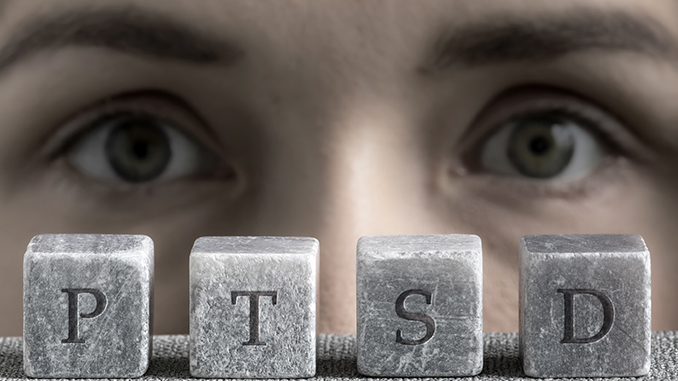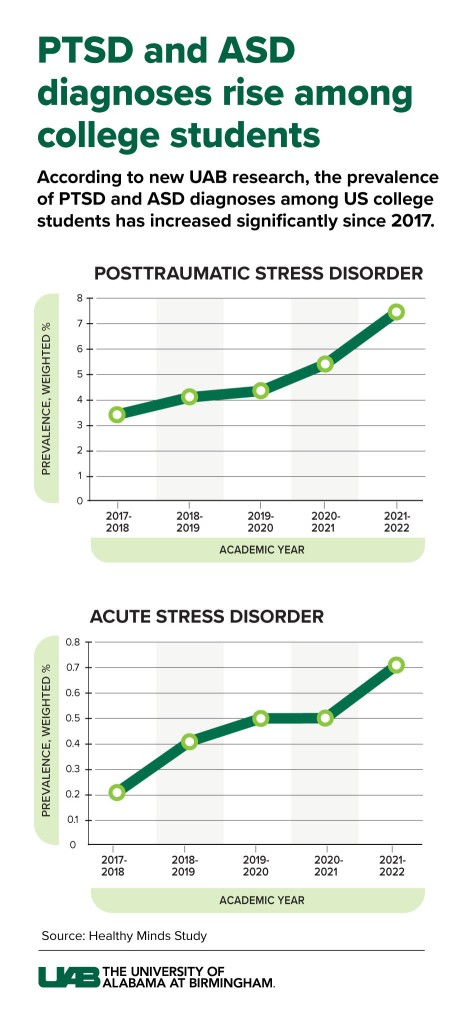
The rates of PTSD and ASD have more than doubled over a five year period.
Published: July 25, 2024
By: Courtesy of UAB
New research from the University of Alabama at Birmingham School of Education and Human Sciences shows that post-traumatic stress disorder (PTSD) and acute stress disorder (ASD) diagnoses have risen significantly in American college students since 2017.
Published in JAMA Network Open, researchers studied more than 392,000 college students from 2017-2022. The rates of PTSD and ASD more than doubled over the five year period, with the prevalence of PTSD increasing from 3.4 percent to 7.5 percent, representing a staggering 121 percent increase, and that of ASD increasing from 0.2 percent to 0.7 percent, marking a 250 percent increase.
What is the difference between PTSD and ASD?
PTSD involves persistent symptoms for over a month after trauma.
ASD has similar symptoms but occurs within three days to a month post-trauma.
Yusen Zhai, Ph.D., assistant professor of counseling, director of the UAB Community Counseling Clinic and lead author of the findings, says that both PTSD and ASD can severely affect students’ academic and social lives and lead to long-term health problems.
“The rise in these diagnoses likely reflects broader societal stressors impacting this group, including pandemic-related challenges,” Zhai says. “Traumatic events, such as campus shootings, social unrest, and racial trauma and discrimination, might also have played a significant role.”
Zhai says there is a critical need for trauma-informed interventions and support strategies for college students to address these growing mental health challenges.
“Given the detrimental effects of PTSD and ASD, research in this area is essential for developing targeted interventions, informing policymaking and allocating resources effectively,” Zhai says. “Increased understanding helps promote mental health awareness, reduce stigma and ensure long-term societal benefits.”

